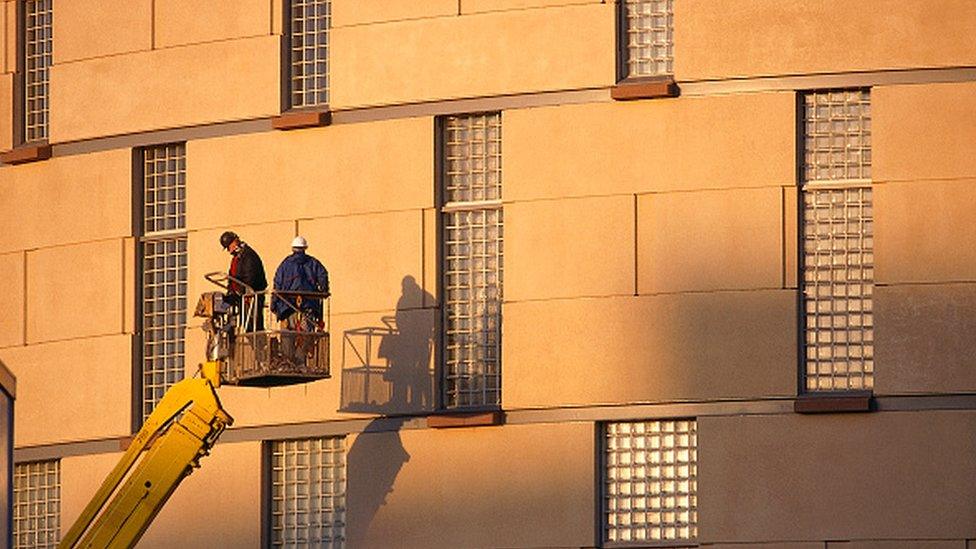City flats with flammable cladding 'still unsafe'
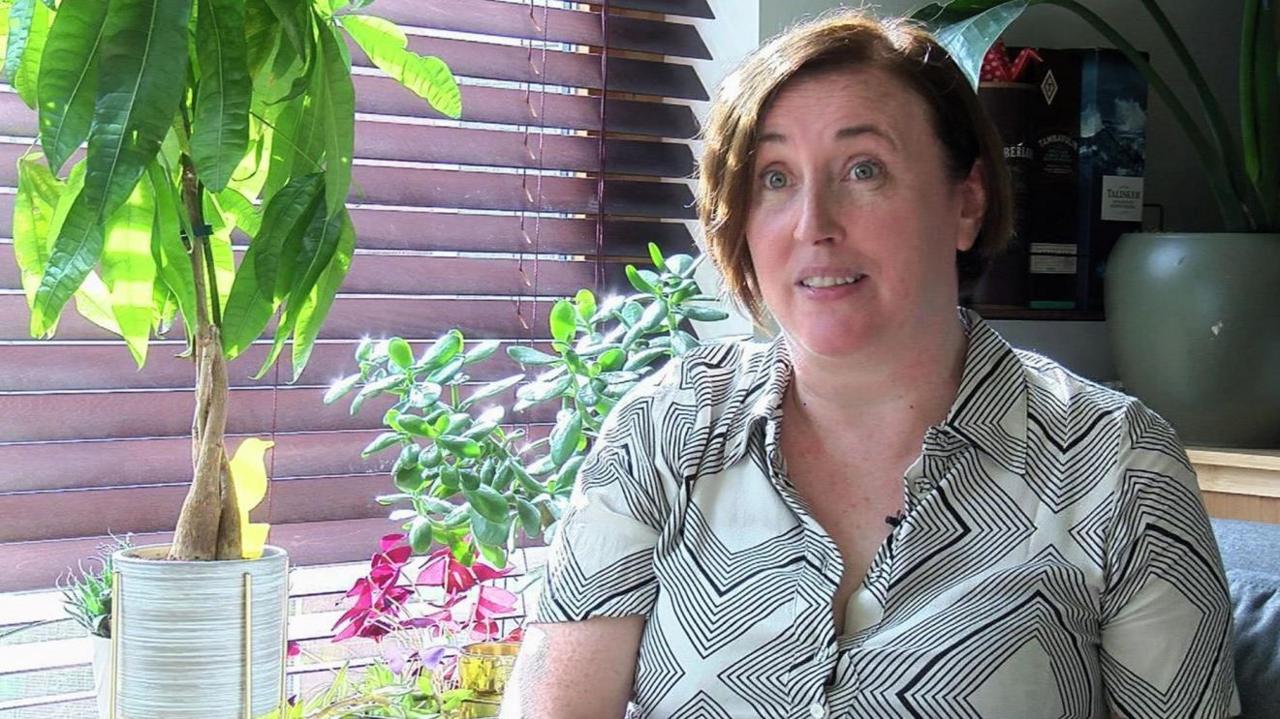
Rachael Loftus is a member of campaign group The Leeds Cladding Scandal
- Published
People living in high-rise flats covered in flammable cladding said they were still waiting for their homes to be made safe - more than four years after they were told they were hazardous.
Rachael Loftus moved into her apartment in Leeds city centre in 2007, unaware of the fire risk the cladding posed.
It was identified when her building, the Timblebeck block, was inspected following the Grenfell Tower fire in 2017, and residents had to pay £840 per month towards fire safety wardens.
However, the cladding has still not been repaired or replaced. Freeholders Grey GR said its priority was to "ensure the Timblebeck building is remediated as quickly and safely as possible".
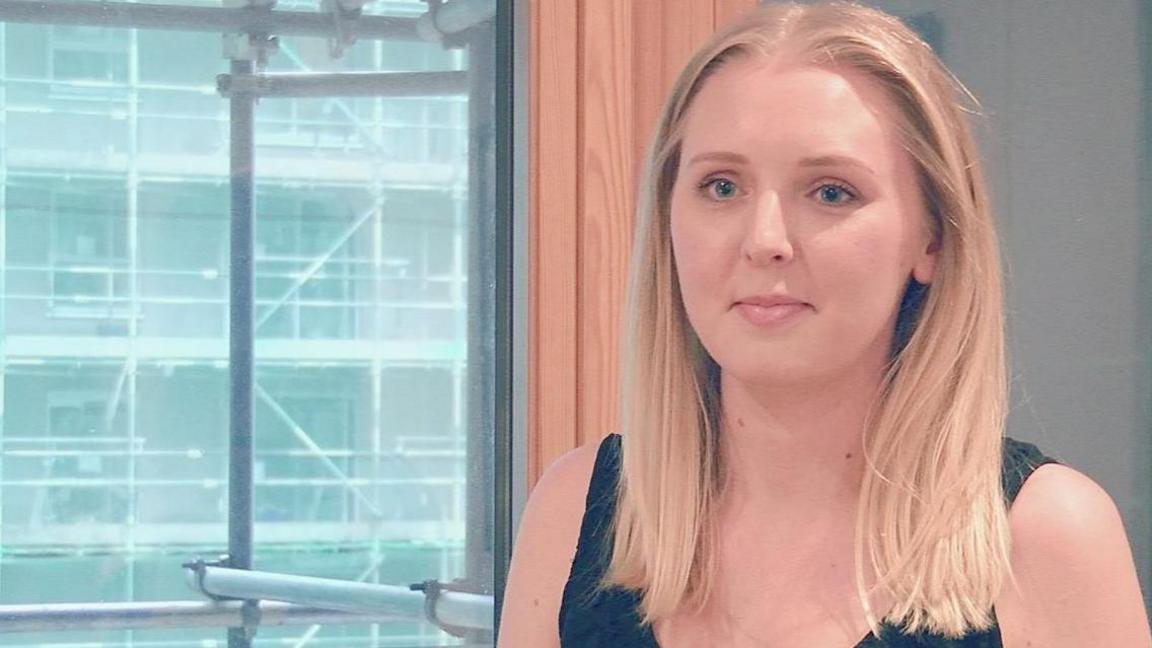
Emily Boswell hopes the work on her flat will end her difficult five years
Ms Loftus, who is part of campaign group The Leeds Cladding Scandal, said the sense of urgency had "completely dissipated".
The Timblebeck block is part of the Fearn Island Mills development on Neptune Street.
"Along with the timber cladding on the outside of the building, we have also been told that this polycarbonate sheeting should never have been used on a residential building, because it's likely to melt if the temperature got very high," Ms Loftus said.
"The other problem is that the insulation behind the outer wall is polystyrene, so that would melt and be quite toxic in the event of a fire."
Ms Loftus - with the support of the Ministry of Housing - took the freeholders to court to try and force them to start the process of remediation.
As a result of the civil case, the work to make the cladding safe must be completed by November next year.
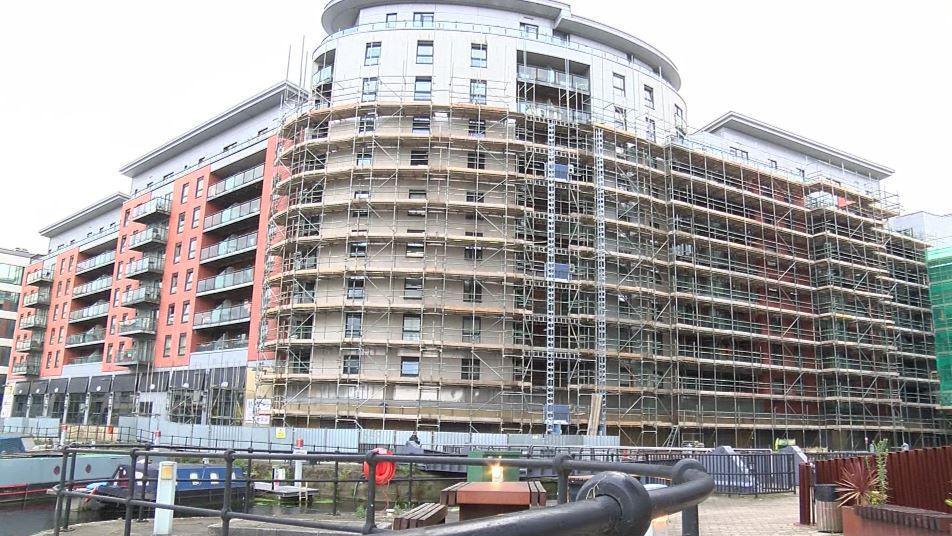
Work has now begun on Ms Boswell's flat in the city centre
Grey GR said in a statement its priority was to "ensure the Timblebeck building is remediated as quickly and safely as possible".
It said: "We are progressing with remediation works and have entered into a pre-construction services agreement (PCSA) with a main contractor following a full tender process."
The company added it had agreed that completing the required remediation works by the end of November 2026 was "reasonable and appropriate".
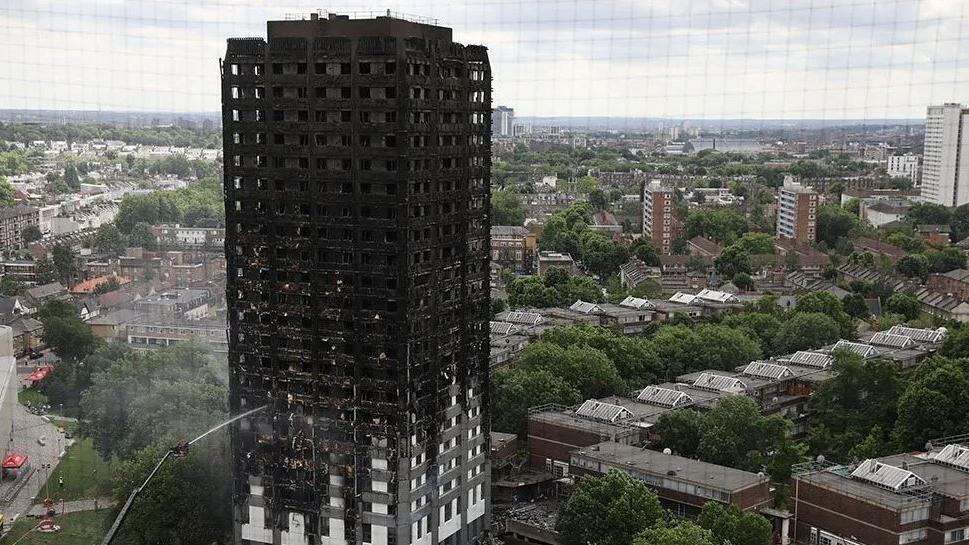
The Grenfell Inquiry report's second phase was published on Wednesday
The Grenfell Inquiry report's second phase, which was published this week, addressed how the London tower block came to be in a condition that allowed the fatal fire to spread.
The first phase detailed the factual narrative of the events on the night of the blaze and was published in October 2019.
Seventy-two people died when a fire broke out at Grenfell Tower on 14 June 2017, and the blaze spread through flammable cladding on the exterior of the building.
The Building Safety Act was passed last year, in an attempt to force developers to replace dangerous cladding.
Watch on BBC iPlayer
I Was There: Grenfell
- Attribution
'Severe anxiety'
Emily Boswell lives in a flat in Mackenzie House on Chadwick Street in Leeds, which is currently undergoing work to replace its cladding.
She said she had lived with severe anxiety in the knowledge that her property was not safe.
Work is expected to last more than a year, but she said it would be worth the disruption.
"I'm lucky work on my building is starting now, when there are so many leaseholders who are trapped in their flats with no sign of when it is going to start.
"I do hope that this is the beginning of the end of what has been a very traumatic five years."
Leeds Central and Headingley Labour MP Alex Sobel said: "The action we need to see is that the burden doesn’t fall onto those either renting or owning flats in those buildings who are the victims here, but for the building owners and the government to step in and ensure a Grenfell can't happen in our city of Leeds."
Listen to highlights from West Yorkshire on BBC Sounds, catch up with the latest episode of Look North or tell us a story you think we should be covering here, external.
Related topics
More stories like this
- Published5 September 2024

- Published19 October 2021
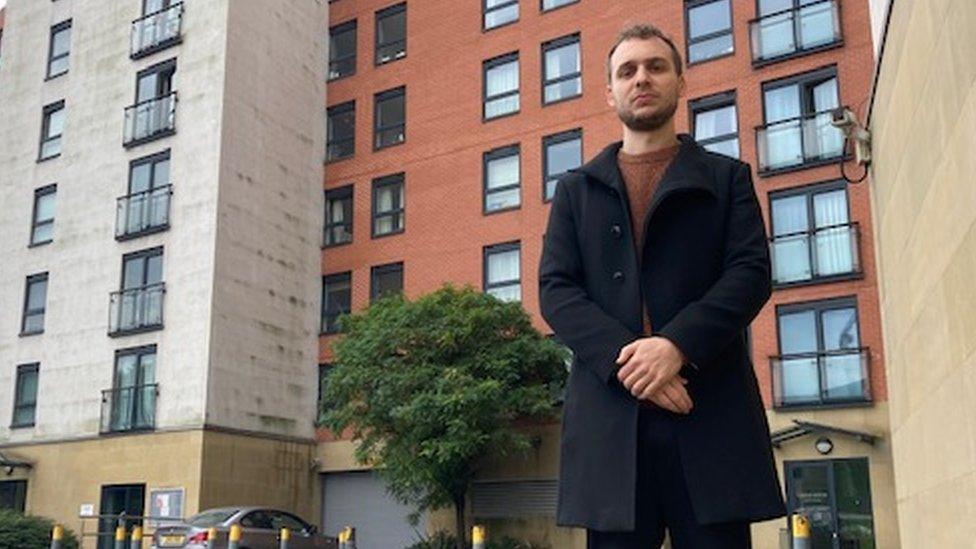
- Published10 January 2020

- Published23 May 2024
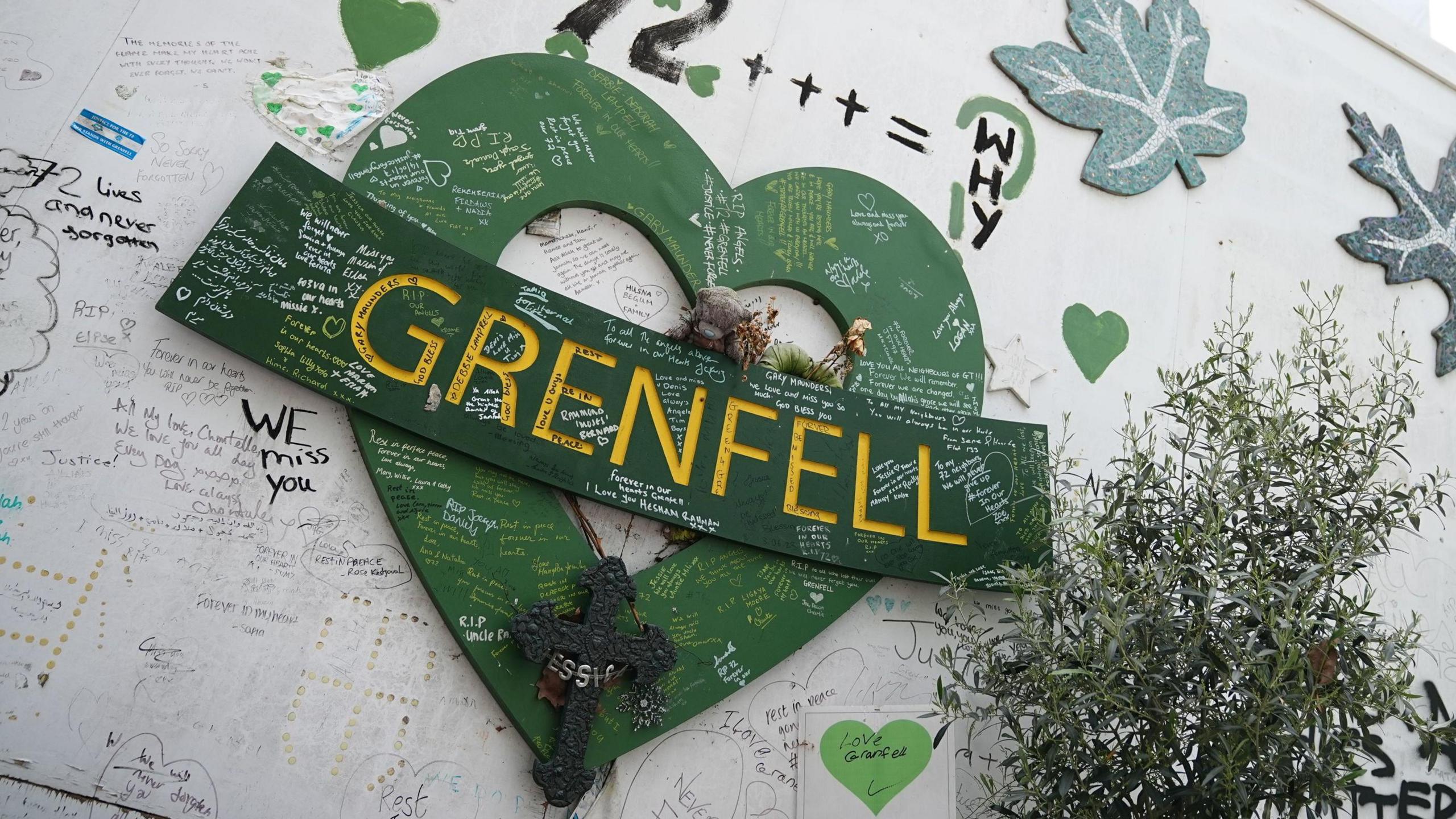
- Published16 December 2020
